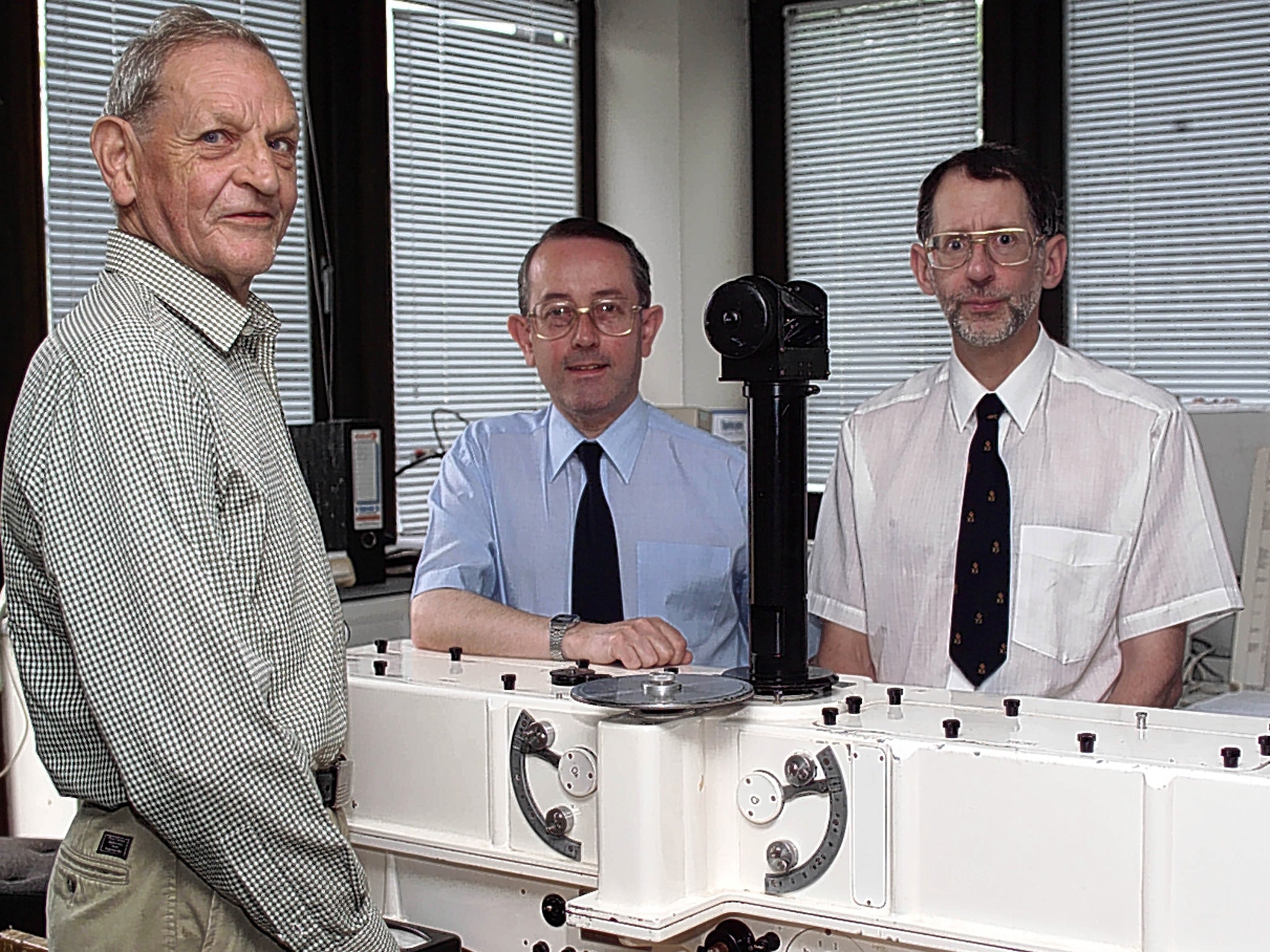Joe Farman: Scientist who first uncovered the hole in the ozone layer

Joe Farman was a British physicist who came to prominence when he alerted the world to the man-made hole in the ozone layer. It became widely accepted as one of the biggest environmental and scientific discoveries of the 20th century.
Farman and his fellow researchers, Brian Gardiner and Jon Shanklin, caused a sensation when they published their findings in Nature in May 1985, and caused major embarrassment at Nasa, who had been monitoring the earth's atmosphere extensively with their satellites but had found nothing. In fact Farman's study nearly didn't saw the light of day. The head of his division had tried to suppress the paper, writing to the Meteorological Office to say: "It shouldn't be published because it'd be very embarrassing if their inferences were wrong."
The study by Farman and his colleagues revealed that levels of ozone above the Antarctic had fallen by about 40 per cent between 1975 and 1984. They demonstrated that the hole was not a natural occurrence but the result of reactions triggered by chlorofluorocarbons (CFCs) in the stratosphere. The discovery of the ozone hole over the South Pole led to the 1989 Montreal Protocol, the international agreement intended to control and phase out the global production of CFCs and other ozone-damaging chemicals, which were commonly used as refrigerants, spray-can propellants and solvents.
The hypothesis of ozone depletion had been put forward in the 1970s but had been dismissed by Nasa scientists after satellites had failed to substantiate the theory with any evidence. Farman had been collecting atmospheric data from the British station at Halley Bay, Antarctica since 1957, with teams sent annually to measure ozone levels and concentrations of trace gases like CFCs. Poorly funded, they relied on old-fashioned devices such as weather balloons and the Dobson meter, a rudimentary ozone-measuring machine which worked well only when wrapped in a duvet.
In 1982 Farman's ozone reading showed a dramatic dip. At first he was sceptical and thought there must be an instrument malfunction, given the severe cold and the fact that his Dobson meter was old and ground-based with only one data point, the part of the atmosphere directly above it. Furthermore, he reasoned, Nasa, with satellites collecting atmospheric data from around the world, had reported no anomalies. Farman ordered a new instrument for the next year's measurement.
The following year the dip was even bigger. "It just went haywire," Farman recalled. "The levels really fell away." Almost half the ozone layer seemed to have vanished and so he checked data as far back as 1977, but then believed the discrepancy to be above Halley Bay only, leaving other areas unaffected. The following year he and his team took measurements 1,000 miles north-west of Halley Bay. There, too, there was a large decline. Farman decided it was time to publish his data.
Much to Nasa's chagrin, satellite data had been gathered supporting Farman's findings but had been overlooked. Rechecking their data they discovered a gigantic hole the size of the US and growing.
Born near Norwich in 1930, Joseph Charles Farman was the younger of two children. His father was a self-employed builder, his mother a nurse. He showed an aptitude for mathematics and worked privately with the headmaster, while also enjoying improvising with radio equipment on Scout trips and reading the popular science of the era. He also enjoyed tending the family greenhouse, a pursuit that endured into adulthood.
Educated at Norwich School, Farman, a self-confessed "naughty" boy, excelled in science and won a scholarship to read Mathematics and Natural Sciences at Corpus Christi, Cambridge, going up in 1951 after 18 months' National Service in the Royal Electrical & Mechanical Engineers. He later recalled being inspired by a lecture given by the headmaster's brother, who had been on the British Greenland Expeditions of 1935-36 and 1937.
Following graduation in 1953 and having then spent three years working on guided missiles for de Havilland at Hatfield, Farman was appointed as a scientific officer at the Falkland Islands Dependency Survey, the predecessor of the British Antarctic Survey (BAS), based in Cambridge. He spent two winters in the Argentine Islands, Antarctica and served as Base Commander from 1958-59.
He became head of the Falkland Islands Dependencies Survey Physics Unit at the University of Edinburgh in 1969, and returned to BAS as Head of the Physics Section in 1976 in order to focus on Antarctic ozone monitoring as part of BAS's response to growing concern about potential environmental damage. His final research trip to Antarctica was in 1990, shortly before he retired. Thereafter, he cycled daily to work in Cambridge University's Department of Chemistry, and was also a fellow of Corpus Christi. He later carried out research as a consultant to the European Ozone Research Coordinating Unit.
After his ozone discovery, the generally mild-mannered, pipe-smoking Farman became an energetic advocate for environmental concerns, lambasting governments for their naive approach to scientific research. "Too much money is going into expensive climate modelling computers, and not enough into basic observational science," he said. "There are so many variables that computers can't possibly forecast what will happen exactly with the Earth's climate." More recent figures suggest that the ozone layer is slowly repairing itself, but will not return to its early 1980s state until about 2070, due to the long lifetimes of the CFCs already in the atmosphere.
Farman received a number of awards including the Society of Chemical Industry's Environment Medal, the Charles Chree Medal and Prize, and membership of the UN Environment Programme's Global 500 Roll of Honour.
Joseph Farman, physicist: born Norwich 7 August 1930; OBE 1988, CBE 2000; married 1971 Paula Bowyer; died Cambridge 11 May 2013.
Subscribe to Independent Premium to bookmark this article
Want to bookmark your favourite articles and stories to read or reference later? Start your Independent Premium subscription today.

Join our commenting forum
Join thought-provoking conversations, follow other Independent readers and see their replies